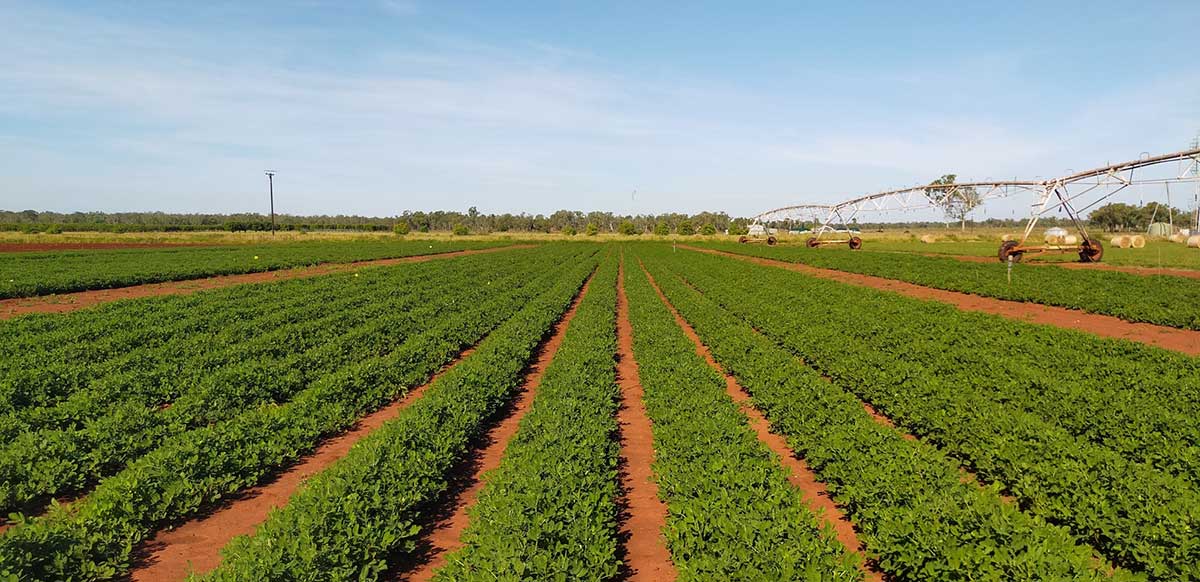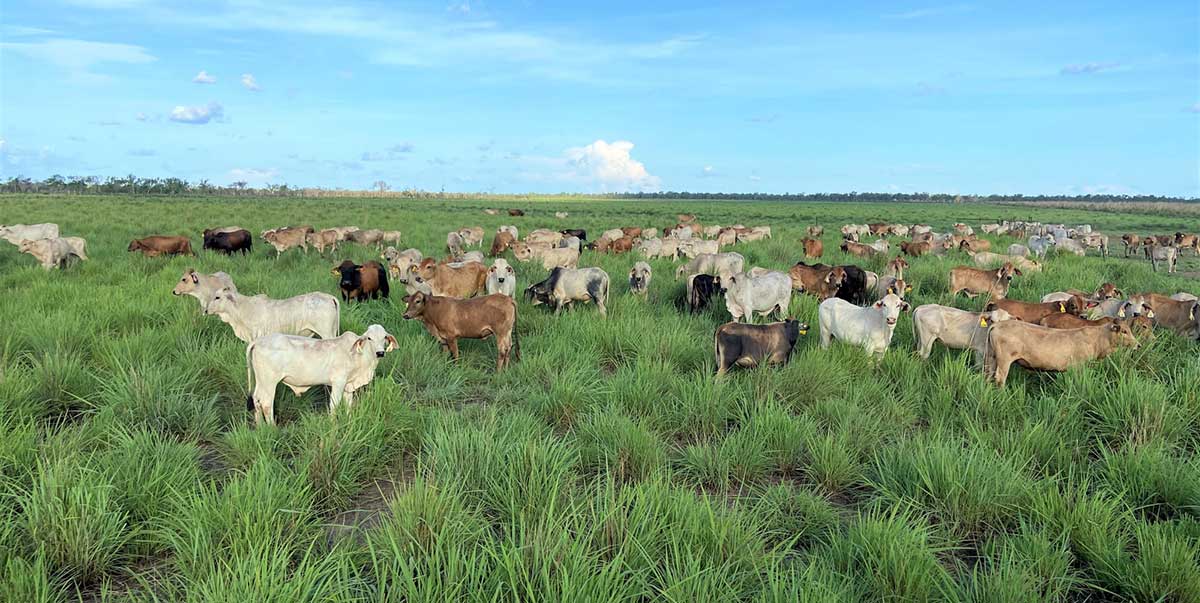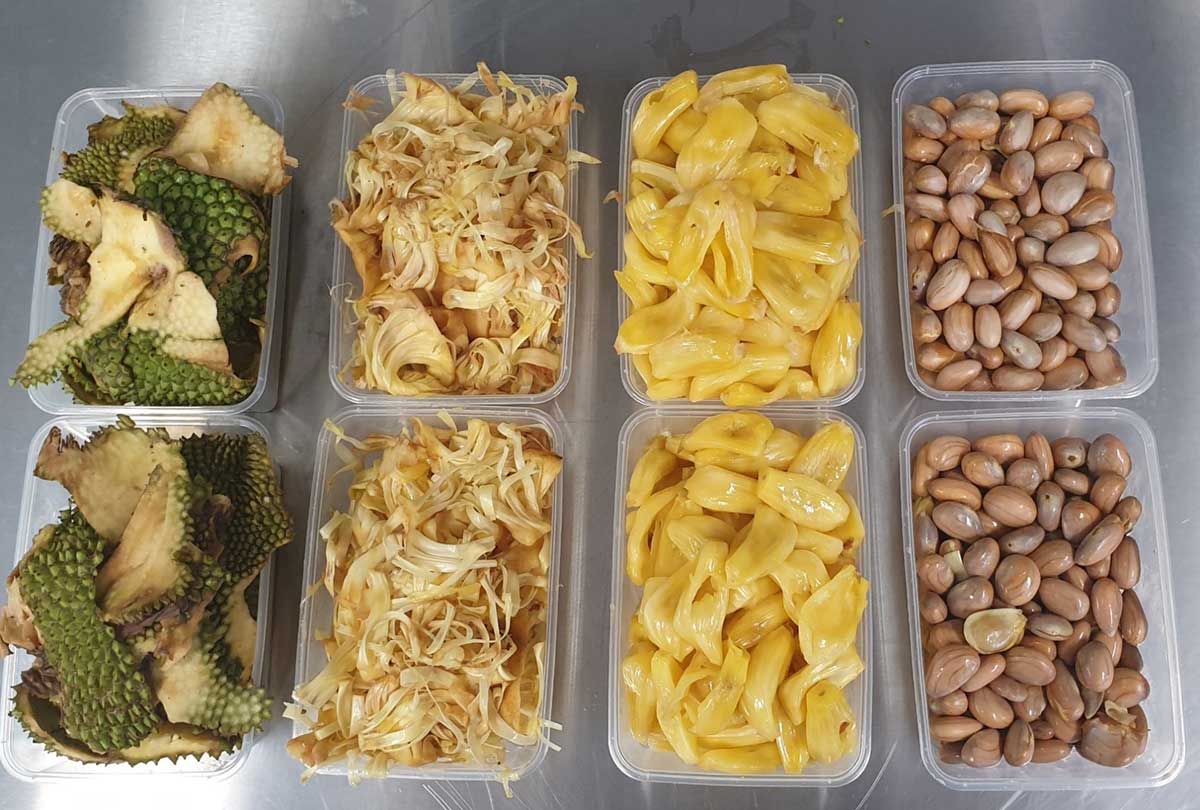Agriculture and Biosecurity newsletter: October 2023
Welcome to the Agriculture and Biosecurity newsletter for October 2023.
NT Government take on the Deloitte GRAVITY round 06 challenge

The Biosecurity team is thrilled to be a challenge provider in round 06 of Deloitte’s GRAVITY Challenge! GRAVITY is a space innovation program tackling real world challenges across a range of sectors using space derived data and capability.
Our challenge is Strengthening Agribusiness: Identifying, Containing, and Mitigating Plant Threats in Northern Australia. We are looking for teams of innovative space technology experts and enthusiasts to help us develop a platform to raise awareness about plant biosecurity threats from pests and diseases, to support Territory stakeholders in identification, proactive threat containment, and risk mitigation.
To learn more about the program and how you can get involved head to the Gravity Challenge website.
Applications close on Tuesday 10 October 2023.
Trial highlights dual purpose peanut potential

Plant Industries’ Cropping Group is currently conducting research trials at Katherine Research Station to assess the potential of new dual-purpose peanut varieties, for the nut and fodder production in the Katherine region.
Adding dual-purpose crops into tropical farming systems has the potential to help expand high value cropping in the Northern Territory. The peanut biomass and by-product also has the benefit of supplying a significant high protein feed for the beef industry. The Katherine/Douglas Daly regions are suitable for peanut production with its lighter soil types and warm tropical climate.
The current research trial Peanut varietal evaluation for dual purpose use involves the assessment of 3 potentially high biomass varieties: to assess the production of high value peanut fodder; having the capacity to provide cattle producers an extra source of protein/weight gain; and then the added benefit of a valuable crop of nuts at the end of the season.
Varroa mite update
Varroa mite was first detected in sentinel hives in New South Wales (NSW) on 22 June 2022 during routine surveillance by NSW biosecurity officer. NSW have been running an eradication program since the outbreak. On 19 September 2023, the National Management Group decided that unfortunately it is no longer technically feasible to eradicate the varroa mite (Varroa destructor) from the region and have decided the national response will now transition to a containment and management program.
The scope of the transition to management phase will be to:
- ensure an orderly stand-down of emergency response operational activities in NSW and Victoria
- slow the spread of Varroa destructor
- build industry resilience to the pest
- provide management options including integrated pest management recommendations and chemical control options, and
- support pollination security.
Further to the national activities, the Plant Biosecurity team is also developing a bee biosecurity action plan to help protect us from Varroa mite in consultation with NT Farmers and industry. Some of the activities being scoped are; a new hive registration process, providing further workshops for beekeepers across the regions and increasing community education and awareness. The Northern Territory Government will continue supporting local beekeepers as Australia transitions to manage this pest. Strong engagement with all other jurisdictions will be key to this new phase and we will endeavour to support other states and territories.
Mango dieback survey now online

A new online survey has now been launched by the Australian Mango Industry Association (AMIA) to assess the impact of mango twig tip dieback (MTTD) in the Northern Territory (NT).
The Australian Mango Industry Association, NT Farmers and the NT Government have teamed up to assess how widespread mango twig tip dieback is in the NT.
Since 2017, Darwin mango growers have been reporting an increasing number of plants with unusual dieback symptoms that have caused the death of entire branches and trees. An initial survey in 2019 identified a small number of growers with MTTD; however, there is a chance that the spread of MTTD may have increased since then.
It is important to note that no exotic pathogens have been identified as the cause of dieback in the NT.
The AMIA have launched an online survey to help assess the impact on production and the distribution of the MTTD in the NT. The resulting data will be crucial to support funding applications for further research and development. The survey is hosted on Survey Monkey, ensuring that any responses are anonymous.
Fill in the MTTD survey.
For more information on MTTD contact the Plant Pathology team by email plant.pathology@nt.gov.au or call 08 8999 2218.
Gamba grass grazing trial at Douglas Daly Research Farm

The gamba grass rotational grazing trial at Douglas Daly Research Farm (DDRF) first started in late 2018 and aims to investigate how to use rotational grazing to control gamba grass while also achieving good animal production outcomes.
Gamba grass (Andropogon gayanus) is a perennial tussock grass that was introduced to Australia as an improved pasture species but is now listed as a weed of national significance and is spreading throughout northern Australia. It grows rapidly during the wet season and when un-grazed or grazed with set stocking becomes tall and unpalatable to cattle and other herbivores. As a result, other grasses are grazed selectively, which can cause gamba grass to dominate and spread.
Gamba grass grows into large tussocks (up to 4m tall) and the high biomass (up to >20t/ha) compared to native species (<6t/ha) significantly increases fuel load for fires. It also matures later in the dry season compared to most native species and these changes in timing and quantity of fuel load can result in significantly hotter wildfires than those fuelled by native grass species.
This can result in long-term environmental impacts through habitat change. Intense gamba grass fuelled wildfires are also a significant danger to livestock, native animals, people, buildings and property. Gamba grass has already spread through large areas on the Northern Territory (NT) (estimated 10,000 to 15,000 square kilometres) including many areas that are difficult to access and so eradication is not likely and control by the use of chemicals is difficult and expensive.
When gamba grass is grazed with traditional methods (e.g. set stocking), it grows so rapidly that it quickly becomes tall and unpalatable and subsequent growth rates of cattle grazing it have been poor. However, anecdotal reports and this trial are showing that intensive rotational grazing results in better livestock productivity and controls growth, seed production, spread, and reduces fire hazard; delivering a ‘win/win’ control option for graziers and the environment.
The trial at Douglas Daly Research Farm
The gamba grass rotational grazing trial at DDRF began in late 2018 and aims to investigate how to use rotational grazing to control gamba grass whilst achieving good animal production outcomes. The trial aims keep gamba grass short so that it does not become a fire hazard, or seed prolifically and spread.
Keeping it short also keeps it palatable and nutritious for cattle and so should increase the cattle production through the wet season from paddocks infested with gamba grass. Some commercial cattle producers have rotationally grazed gamba grass previously, but there does not seem to be any publically available objective data on cattle performance that other producers can use to decide whether to adopt such a strategy. This trial aims to provide this information.
An area of 180ha at DDRF that is infested with gamba grass has been used for this trial. This 180ha was known to have some of the worst gamba infestation on the property. In 2018 it was subdivided into 5 smaller paddocks (20 to 38ha) to enable rotational grazing. A large mob of 360 cattle rotationally graze the 5 paddocks with the aim of keeping the grass short and palatable, and then giving it time to recover before grazing it again.
The overall stocking rate over the trial area of 180ha is 2 head per hectare. However, when the mob of cattle were in one of the small paddocks the grazing density in the paddock at that time ranged from 9.5 to 18.5 head per hectare depending on the size of the paddock. The mob of cattle stays in a paddock for between 2 and 6 days depending on how quickly the grass is consumed. The aim has been keep the gamba in all paddocks below knee height.
Results
The average daily gain (ADG) of cattle grazing in the gamba area over a number of years are shown in table 1. In most years, the growth was recorded from mid-December to early April. Whilst these ADGs are not as high as you would see on improved pastures, they are significantly higher than what was possible from this area when the gamba was tall and rank.
Table 1. ADG of cattle grazing gamba in the trial.
| Wet season | Yearling bull ADG (kg/day) | 2 year old steer ADG (kg/day) |
|---|---|---|
| 2018-19 | 0.58 | 0.71 |
| 2020-21 | 0.53 | 0.52 |
| 2021-22* | 0.86 | 0.74 |
| 2022-23 | 0.56 | 0.43 |
| Average | 0.63 | 0.60 |
*Final weight recorded in late February instead of April.
In each year since the start of the trial, the gamba grass has been kept short by grazing and has not produced any seeds. Essentially, the use of rotational grazing has been a successful method of control for gamba grass.
Rethinking first-in, first-out marketing for innovation

A new project is presenting a forward-thinking initiative aimed at moving away from first-in, first-out marketing towards delivering more predictable fruit quality to consumers.
The Serviced Supply Chains II (AM21000) project is a collaborative effort between Australian horticulture growers and state agencies over a period of 3.5 years to provide decision support for managing current supply chain risks and delivering consistent fresh produce quality.
Building upon the success of its phase I counterpart, the project underscores the significance of regular monitoring of supply chain conditions. By identifying opportunities for improved handling practices and fresh produce quality, this approach has already yielded remarkable benefits. Notably, exporters representing over 69% of all mango export volume have embraced real-time consignment monitoring technologies in the past 2 to 4 years. Sharing monitoring data with chain partners has further encouraged enhanced cool-chain practices, leading to impressive results for one exporter. They managed to reduce average R2E2 mango airfreight temperatures from 17°C to 13°C, resulting in an extended shelf life of 2 to 3 days.
The Plant Industries team is now part of the phase II project aiming to expand on this triumph, and prominent mango grower and distributor, Piñata Farms, has co-invested in this initiative. The phase II mission is to develop decision-aid tools based on even more reliable predictive models. These models will factor in regional variability, harvest maturity, postharvest treatments and cooling procedures across transport. Additionally, the project will focus on building capacity in consignment monitoring and outturn quality assessment in key markets, thereby offering valuable feedback to Australian growers.
The project's mission will not only end here but will also continue by delivering the developed grower-friendly resources through an online portal, offering clear and concise advice on managing supply chain risks. By bridging the gap between monitoring, modelling, and decision-making, the Serviced Supply Chains II project is poised to reshape the landscape of fruit quality marketing, offering consumers a more consistent and delightful experience.
Acknowledgements
The Serviced Supply Chains II project (AM21000) is funded by the Hort Frontiers International Markets Fund, avocado and strawberry research and development levy, and contributions from the Australian Government, with co-investment from the Queensland Department of Agriculture and Fisheries, Victoria Department of Energy, Environment and Climate Action, Northern Territory Department of Industry, Tourism and Trade, Western Australia Department of Primary Industries and Regional Development, Piñata Farms Pty Ltd and Summerfruit Australia Ltd. Hort Innovation is the grower-owned, not-for-profit research and development corporation for Australian horticulture.
APVMA suspends dimethoate use as a mango post-harvest dip

The APVMA has suspended the use of dimethoate as a post-harvest dip and flood spray for tropical and sub-tropical fruit with inedible peel (citrus excluded).
This means that mango growers will not be able to send fruit under ICA-01 or ICA-02, or CTM-01.
Any fruit that has already received post-harvest treatment and that is currently in the supply chain, will be accepted by other jurisdictions, noting that existing MRL testing procedures still apply.
Western Australia currently does not accept fruit that has been pre-harvest sprayed with dimethoate. Alternative and available treatment options for sending mangoes into Western Australia include:
- fumigation with Methyl Bromide
- vapour heat treatment
- hot water treatment.
For further information contact the Plant Biosecurity team or NT Farmers.
Plant Biosecurity
plantbiosecurity@nt.gov.au
Phone: 08 8999 2118
Have your say on the livestock valuation framework

It is important that livestock industry stakeholders have their say in the development of the valuation framework as we prepare a response plan to support and protect our industries against the increasing biosecurity risks to the Northern Territory.
Stakeholders are encouraged to read the discussion paper and provide feedback on the Have Your Say website.
Seeking expressions of interest for jackfruit fruit evaluations

We are looking for commercial jackfruit growers interested in potentially providing fruit to a processing market. Growers are encouraged to submit fruit to Northern Territory Department of Industry, Tourism and Trade for a free evaluation to determine whether or not they will be suitable for processing. Samples will be assessed against a set criteria and growers will receive a report on the results, somewhat similar to a leaf or soil analysis.
This project will assist in the development of commercially viable processed jackfruit products, allowing Australian jackfruit growers to increase their plantings or divert excess fruit to processing. The quality specifications of fruit destined for processing will be evaluated throughout the life of the project to determine which are suitable and guarantee a consistent, high-quality end product.
How do I get involved?
The expressions of interest (EOI) is open until April 2025, to participate:
- you must be a commercial grower
- you must be willing to provide a sample fresh fruit to the department for destructive sampling
- all information collected through the EOI will be de-identified for reporting purposes.
If you are interested in participating, email plant.industries@nt.gov.au.
Give feedback about this page.
Share this page:
URL copied!